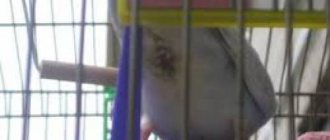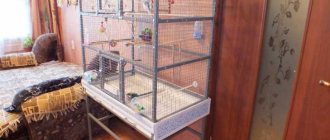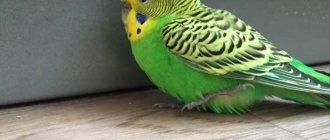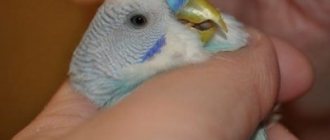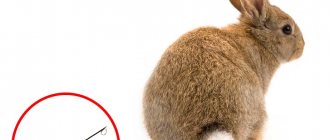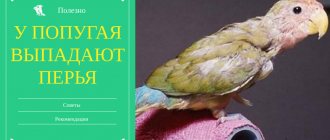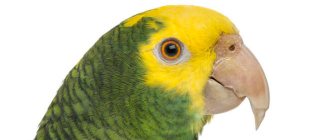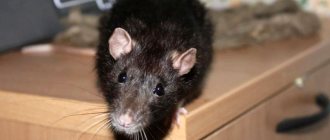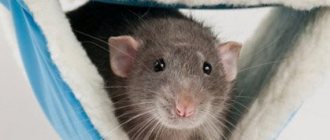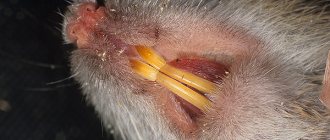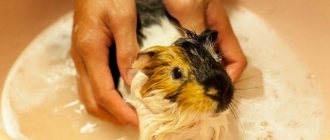One of the very important and exciting questions that bird owners ask is the time and order of the bird’s first flight. How to lure a parrot out of its cage? When is it necessary to release a parrot after purchase? How to keep your pet safe during its first flight? Let's try to understand all these questions in order.
You should always start luring the bird out after the adaptation process has passed, and the bird has already become accustomed to you and calmly lets itself into your arms. Taming is left behind. And you already see that the time for the long-awaited flight is coming. For budgies, this is a crucial moment, perhaps one of the most important. The first thing to consider when releasing an animal is the flight location. It is better that this is the same room in which the cage stood. Otherwise (in a new environment) the bird will begin to panic, get nervous, and rush around the room, because for it the fact itself is unusual and new. Therefore, you need to provide the bird with maximum comfort and secure the room. What will you need for this?
- Close windows and doors;
- Cover windows and mirrors with curtains so that the bird cannot fly towards its reflection and crash;
- Close all the cracks between the walls and furniture as much as possible to prevent the parrot from flying in;
- Hide all shaky and breakable objects (vases, decorative elements, etc.);
- Remove aquariums and water containers, aroma lamps, etc.;
- Turn off electrical appliances, fans, air conditioners;
- Prepare a place where the bird can land.
Look carefully at every detail in the room where the bird will fly. Very often danger lurks where one would not think. Open windows, wires, cords, spiral lamps, narrow passages between walls and furniture, etc.
In order for the parrot to be able to calmly leave the cage, you need to place special perches at the exit. It is also better to cover the chandelier in the room with something; it is better not to turn on the electricity. Because There have been cases where a bird's leg got stuck in a spiral lamp and was burned.
Should a parrot be released from its cage?
Some owners of budgies believe that a spacious cage is enough for their pet, from which it is not necessary to let it out.
Indeed, a spacious cage is most preferable for a bird, however, while in it, it experiences a lack of movement.
Even if you pay attention to your pet’s relatives living in the wild, you will notice that they can make fairly long, long-distance flights.
Physiologically, a domestic budgerigar is no different from one living in the wild. Therefore, flights are simply mandatory.
However, among some owners there is another extreme, when their pets have free access to flights, and the cage is never closed. Here, first of all, you should remember the safety of the parrot.
The fact is that many things in an apartment or house can be dangerous for a pet. Here are some recommendations on how to protect birds.
- Close all windows and vents . The greatest danger to a pet parrot is from open windows. The fact is that a bird can easily fly out of the apartment, but, for obvious reasons, will not be able to return. In this regard, you need to carefully ensure that while the parrot is walking around the apartment, all windows and other paths leading to the street are closed.
- Remove dangerous items. Piercing, cutting, heating, and switched-on electrical objects and equipment can be dangerous for a parrot. The bird may be injured if it comes into contact with them. In this regard, the owner needs to remove them from the pet’s reach. In addition, it is not allowed to have open electrical wiring in the room where the parrot will be.
- Avoid contact with indoor plants. A parrot may show an unhealthy interest in indoor plants. Some of them are poisonous to birds, and accordingly, their consumption is fatal for them. In this regard, it is necessary to remove indoor plants during walks until the parrot stops paying attention to them.
In addition to plants, other pets pose a significant threat to parrots, especially cats, which by nature are predators with a pronounced and developed hunting instinct. You should not leave a parrot and a cat in the same room unattended.
In addition, we should not forget about the microclimate of the room where the parrot is located. It should have an optimal temperature (from +15 to +25 degrees Celsius), humidity and a complete absence of drafts, which are extremely detrimental to the health of the bird.
Is your parrot tame?
Not really
What problems may arise
First, the bird adapts to its new environment. It is necessary to prepare all the necessary conditions so that the adaptation process takes place without stress for the bird. Be sure to ask what the parrot eats.
Any malfunctions in the digestive system will definitely not have a positive effect on the bird’s mood. The pre-feed can be distributed so that she can find it. The drinking bowl should be filled with clean water so that the parrot does not feel thirsty.
If the parrot is very small, then there is no need to buy closed drinking bowls and feeders. There are cases where a young chick climbed into closed feeders and died there. This is how the downside of a bird’s adaptation to a new place affects itself. How to care for him in this case? It is necessary to purchase open drinking bowls and open feeders.
If the bird is afraid and seeks shelter, you can cover one side of it with an opaque cloth. This will give the parrot a feeling of security. The adaptation period can last from a week to a month. Nowadays, he is especially frightened by the sharp sounds of the TV or the vacuum cleaner turned on.
When taming a winged creature indoors, remember that only affection and care will make it feel at home. It is also necessary to carefully change the water and feed, without unnecessary movements and noise. It depends only on the owner how the animal will behave: friendly or aggressive.
At first, the animal may even have reviews. In such a situation, be sure to contact your veterinarian to find out the causes of irregular bowel movements.
The parrot is silent and does not tweet
Most often, the reason that a parrot does not chirp is loneliness. Lack of attention or lack of communication with him will lead to the bird being closed into his world.
By its nature, this creature is quite sociable. If a parrot is very depressed, it may begin to pluck feathers. When the owner does not attach importance to this and does not begin to take measures to care for the bird, death is possible.
Buying several pets at the same time is a great idea. When a person does not have time to pay attention to the birds, they will play with each other and illuminate moments of absolute loneliness.
If the animal does not chirp, it may lack vitamins. Perhaps they suffer from a lack of sunlight and vitamins absorbed along with the sun's rays.
Restriction of bird movement is especially typical in spring and autumn. To cure a bird of this, it is necessary to add vitamins and minerals to its food to help normalize the functioning of the body's systems.
Running around the cage
Because of their temperament, animals are silent. Even more on the first day after purchase. They prefer contemplation of the world around them. Sputum is a trait that helps them stay in the cage for a long time, minding their own business.
But if she starts to run, it means that something has scared her or she is missing something in her home environment. In such situations, it is necessary to add something from toys or change the appearance of the house inside. Immediately after purchase, the house should have the following things:
- power supply (cannot be closed);
- drinking bowl (it should be easy to clean and it should also be easy to pour water into it when it runs out;
- wooden perches. They should be sticks attached to the walls of the cage. It is recommended to make them from fruit trees. These are 2 - 3 pieces with a diameter of 1.5 cm each;
- hanging rope;
- small mirror;
- bathing suit.
The cage should be clean and comfortable. Before taking your pet there, you need to thoroughly disinfect the house with soap. Then it needs to be dried.
In addition, the house should not have drafts, direct sunlight, heating appliances, or equipment that causes vibration or makes a lot of noise.
Refusal from a cage can also be caused by the fact that the animal is getting used to the new conditions of its stay. In this case, you need to spend more time with your pet and make sure that he is not bored.
Doesn't eat or drink
How to force a parrot to eat and drink if it doesn't want to? Just tame him. He was not yet accustomed to the unexpectedly changed environment for him. Poultry may also have gastrointestinal problems. To predict this problem, you need to monitor the animal's droppings.
In order for a bird to start eating and drinking in a new place, you need to accustom it to a change of environment. The animal's manger must be filled with food. In order for the parrot to eat regularly and correctly, it is also necessary to monitor the drinking bowl. Thirst will not have a positive effect on your budgie's appetite.
Liquid droppings
Liquid droppings are evidence that the animal is not eating well. In this case, you need to contact a specialist to fix the problem. In some cases, the cause is poor nutrition or inattention.
A bad mood is the first sign of the development of depression, which can lead to the death of the bird. The necessary complex of minerals and trace elements added to animal feed will protect it not only from irregular bowel movements, but also from bad mood.
What does flying give a bird?
Flying is essentially physical exercise and activity, which is essential for all living things.
Movement is a physiological process that provides the pet with:
- good mood, relief from depression;
- proper digestion and good appetite;
- normal weight (no obesity or dystrophy, which domestic budgerigars are often susceptible to);
- good health in general.
It should be remembered that flying and other physical activity for a pet is a sure way to prevent many systemic chronic diseases.
In addition, in the complete absence of flights, the pet may eventually forget how to fly altogether. This is due to developing muscle atrophy - a condition that is extremely difficult to correct in the future.
When to open a bird house for the first time after purchase?
One of the most common mistakes made by beginners in keeping parrots is allowing the pet to fly immediately after purchasing it. Let's look at why you shouldn't do this.
The fact is, moving into a home with a new owner is a lot of stress for a feathered pet. Over time, he will get used to the new place and the people around him. However, during the adaptation period, you should not open the house at all in order to let the bird out.
The adaptation period is strictly individual in duration, but on average it is about 2 weeks. If, after purchase, the pet behaves actively and cheerfully, willingly communicates with the owner and other people, and sits in their arms, then this means that the parrot has become accustomed to the new environment and adaptation has been successfully completed. From now on, you can open the cage for the bird to fly.
Tips from breeders in the video:
Poisonous flowers
Mischievous birds can gnaw indoor plants, which often leads to the death of harmless crumbs. Flowers that are especially poisonous to them are: azalea, periwinkle, dieffenbachia, hyacinth, hydrangea, jasmine, crocus, caladium, cana, alocasia, narcissus, oleander, poinsettia, philodendron, aeonium.
Try to anticipate situations that could harm your pet, and then the feathered family will be happy and healthy.
What not to do
There are usually no problems with veterans. They simply open the cage and leave it without any problems. Having played enough and flown around the room to the maximum, the parrot returns home safely to have a snack and rest. Birds understand perfectly where their place, food and shelter are.
Grown-up chicks that have recently entered the house are afraid to leave the house. In this case, it is necessary to take into account all the nuances before releasing the parrot from the cage for the first time. It also happens that birds fly away and refuse to return to him. In this case, you should not wave your arms at the bird or try to push it away. You also cannot force a parrot out of the house. Everything must be voluntary. The bird will get scared and refuse to leave the house at all.
How to put a parrot back in its cage
Most feathered pets are extremely willing to leave their cage, but putting them back in is not an easy task. The fact is that the parrot will fly into the cage on its own if it is very tired or hungry. However, if the owner cannot wait long for the bird to fly, then it must be lured. The pet's favorite toys or some treat are used as bait.
Experienced owners of budgies remove the feeder from the cage several hours before releasing the parrot. Thus, the parrot will fly back faster after a walk, because it will be hungry, and will also react better to the bait in the form of a treat.
highly not recommended to chase a parrot around the room, trying to catch it, or to scream loudly . The fact is that these are extremely sensitive and timid birds that require a delicate attitude. The stress experienced by the pet in this case can lead to the fact that the bird subsequently refuses to fly altogether, and its relationship with the owner is lost.
Parrot behavior and reaction to stress
The first thing that can happen is liquid excrement. Don't be alarmed, it's no big deal as long as her ass is relatively clean. If there is an accumulation of stuck droppings (you should have looked at it before purchasing), then perhaps this is a sign of some kind of disease, which we will talk about in another article. In any case, you can help the chicken recover faster and veto 1.1 or tsamax.
The bird may refuse food and water. This is also normal and natural. Sometimes particularly “impressive” individuals may not eat at home for 2 days, but this is rather an exception to the rule. Most often, new owners complain that the bird does not eat or drink at all. There is no need to be afraid here, unless it is a very small chicken, about 40-45 years old. Not a single adult bird will die if there is food nearby. It’s not okay to go hungry, auntie, go hungry and eat.
If a new tenant breaks into the cage, try setting up the cage so he sees fewer people moving around the room, or simply cover part of the cage with a dark blanket. The bird will hide in a corner and is not so scared.
Avoid loud noises, don't shout near the cage, don't wave your arms, don't want your bird to die of fear?
How often should a wavy be released?
Flights have an extremely beneficial effect on the physical health and emotional state of the bird. Therefore, there are simply no restrictions on the maximum duration and their number per week. However, it should be borne in mind that they should not occur uncontrollably - the owner needs to control his pet, which is not always possible.
Of course, daily flights are highly desirable, but if the owner does not have enough time, then the cage should be opened at least 3-4 times a week.
In addition, it is important to choose the optimal flight time . It is believed that 2-3 hours of flight per day is enough for a parrot. However, in this case, you should still take into account the mood and desire of the bird itself.
Your pet should be released from its cage during the day or under artificial light. In the dark, it is safer for the parrot to be inside it.
The question often arises about how to release several pets from a cage - one at a time or separately. It should be understood here that if two or more parrots live in one cage, then the living space of the birds becomes more limited. That is why flights outside it should be given special attention. It is best to release the birds together.
What to do if the bird does not fly
There may be several reasons why a bird does not fly, but the two most common are:
- Going through the adaptation period. In this case, the owner needs to provide a calm environment for the pet, waiting for the moment when he gets used to the new environment.
- Disease. Reluctance and even inability to fly may be a sign of ill health. In this case, it is recommended to show the bird to a veterinarian.
It is impossible to teach a budgerigar to fly, since they develop this skill independently without anyone’s participation . However, the owner can facilitate the first flight outside the cage in a new home by creating safe indoor conditions and establishing a trusting relationship with the pet.
Conclusion
Flight is essential for budgies. This is necessary for their physical health. However, it should be borne in mind that free movement around the apartment may be associated with certain risks for the bird. That is why the room where the parrot will be and fly must be prepared for this and completely safe.
